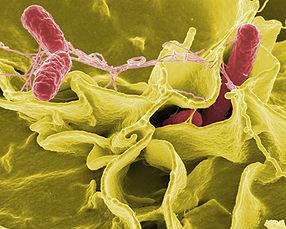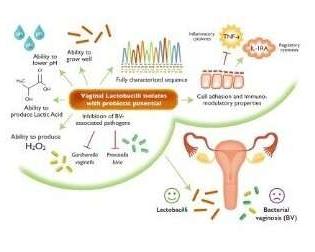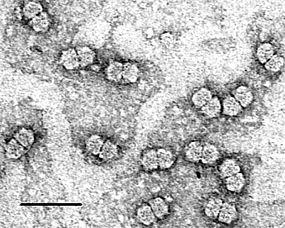Host:Escherichia coli, Salmonella enterica enterica Tenessee.
Project funding: ANR RESISTE (PI : G. Martin)
[Photo credit: Wikipedia ]
CURRENT TEAM MEMBERS

Core community of bacterial vaginosis: ecology and evolution of bacterial metabolic interactions.

Modelling and measurement of resistance evolution in E.coli : antibiotics and bacteriophages.

Caractérisation des populations de Prevotella bivia
PAST TEAM MEMBERS
CURRENT PROJECTS

Collaborators: Guillaume Martin (UMR ISEM, Montpellier), Mireille Ansaldi (LCB, Marseille)
learn more ...

Collaborators: Rémy Froissart (UMR MIVEGEC, Montpellier), Fabienne Orsi (IRD, Marseille)
learn more ...
H...
Funding: ANR ANTHROPO-PHAGES (PI : C. Brives)
[Photo credit : XXX ]

Collaborators: Jo-Ann Passmore (U. Cape-Town, ZA), Marie Vasse (MIVEGEC, Montpellier),
learn more ...
M....
Funding: several
[Photo credit: XXX ]
RELEVANT PUBLICATIONS Click here for the full list

PLoS Pathogen
click for abstract ...
Antibiotics continue to be the standard-of-care for bacterial vaginosis (BV), although recurrence rates are high. Vaginal probiotics may improve durability of BV treatment, although few probiotics for vaginal health contain Lactobacillus spp. that commonly colonize the lower female genital tract. Characteristics of vaginal Lactobacillus strains from South African women were evaluated for their probiotic potential in vitro compared to strains from commercial vaginal products, including growth at varying pHs, ability to lower pH, produce D-/L-lactate and H2O2, influence growth of BV-associated Gardnerella vaginalis and Prevotella bivia, adherence to cervical cells and susceptibility to antibiotics. Fifty-seven Lactobacillus strains were purified from cervico-vaginal fluid, including L. crispatus, L. jensenii, L. gasseri, L. mucosae, and L. vaginalis. L crispatus strains grew better at pHs below 4.5 and lowered pH more effectively than other strains. Production of D-/L-lactate and H2O2 varied between Lactobacillus species and strains. Lactobacillus strains generally inhibited P. bivia more uniformly than G. vaginalis isolates. All vaginal Lactobacillus isolates were resistant to metronidazole while susceptibility to clindamycin varied. Furthermore, vaginal Lactobacillus strains tended to be broadly susceptible to penicillin, amoxicillin, rifampicin and rifabutin. Whole-genome-sequencing of five of the best-performing vaginal Lactobacillus strains confirmed their likely safety, due to antimicrobial resistance elements being largely absent, while putative intact prophages were present in the genomes of two of the five strains. Overall, vaginal Lactobacillus strains largely performed better in these in vitro assays than probiotic strains currently used in probiotics for vaginal health. Including the best-performing vaginal Lactobacillus isolates in a region-specific probiotic for vaginal health may result in improved BV treatment options.
Read more
eLife
click for abstract ...
For pathogens infecting single host species evolutionary trade-offs have previously been demonstrated between pathogen-induced mortality rates and transmission rates. It remains unclear, however, how such trade-offs impact sub-lethal pathogen-inflicted damage, and whether these trade-offs even occur in broad host-range pathogens. Here, we examine changes over the past 110 years in symptoms induced in maize by the broad host-range pathogen, maize streak virus (MSV). Specifically, we use the quantified symptom intensities of cloned MSV isolates in differentially resistant maize genotypes to phylogenetically infer ancestral symptom intensities and check for phylogenetic signal associated with these symptom intensities. We show that whereas symptoms reflecting harm to the host have remained constant or decreased, there has been an increase in how extensively MSV colonizes the cells upon which transmission vectors feed. This demonstrates an evolutionary trade-off between amounts of pathogen-inflicted harm and how effectively viruses position themselves within plants to enable onward transmission.
Read moreNEWS

Vers un nouveau site web pour une navigation plus rapide et plus simple (on espère !).
more ...
Ssss
Read morePHOTO GALLERY
Montpellier


